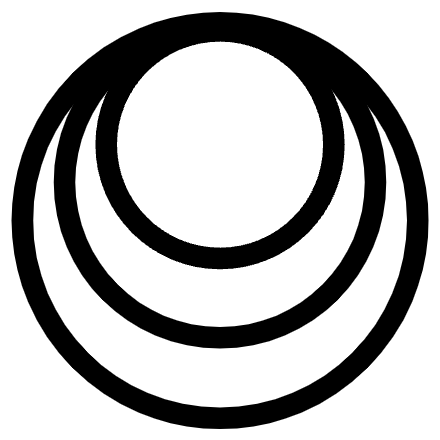In this incantation, I explore my awakening as a dynamic field centered in my perception, divided into two realms: the innerself, a space of thoughts and temporal depth, and the outerself, a sensory projection of the external world. My physical body forms a boundary between these realms, distinguishing what I consider myself from what is not. I grapple with the paradox of being both the creator and the observer of my reality, often losing myself in the very narratives I construct.
My awakening is not a static event but a dynamic field that extends outward in multiple dimensions. This field has a center, a focal point where I sense the presence of my forehead and eyes, which I consider the sensational center of my experience. From this center, my perception of awakening unfolds in two distinct yet interconnected directions: inward, toward what I call my innerself, and outward, toward my outerself.
The Innerself: The Realm of Ideas and Temporal Depth
Behind and above this central point lies my innerself, the space where ideas, thoughts, and the sense of time originate. This area is rich with narratives, a constant flow of stories I tell myself, constructing the fabric of my current reality. My innerself possesses a depth that is not spatial but temporal — it’s a place where the past, present, and future interweave, allowing me to create a cohesive narrative that I can follow and understand.
This part of my field is potent, almost tangible but not visual. It is where I feel the weight of my experiences, the flicker of ideas, and the whispers of time. It is the domain I identify with as me — the core of my existence, my subjective sense of reality. Yet, within this innerself, I also encounter the differentiation between what is known and unknown. There are regions within my awareness that remain uncharted, mysteries that I explore, create, and reveal to myself.
The Outerself: The Projection of the Physical World
In front of my central point lies my outerself, the external projection of my field. This realm is filled with movement, light, color, shapes, and spatial depth — it is the visual tapestry that I experience as the world around me. Unlike my innerself, my outerself doesn’t carry the same potency. It lacks the temporal weight and is only as deep as my visual perception allows. I consider this domain not me, an extension of my consciousness that exists beyond my physical body, yet tethered to it.
The outerself is where I project my experience outward, filling the world with the sensory data of sight, sound, and movement. This projection appears as a cavity, a space I navigate, filled with shifting patterns that seem separate from my sense of self. The boundary between my innerself and outerself is thin, a membrane defined by my physical body, what I perceive when I look down at myself. On one side, I find the non-visual, potent realm of my innerself; on the other, the surface-level, visual world of the outerself.
The Thin Membrane: My Physical Body as the Divider
The distinction between my innerself and outerself is marked by the membrane of my physical body. This boundary acts as a divider between two realities — one internal and sensational, the other external and visual. The physical body, the flesh I perceive as myself, holds these realms apart, giving form to my dual existence. It is a delicate threshold where my awakening field shifts from a subjective narrative to an objective projection, defining the contrast between what I perceive as me and not me.
The Allure of My Own Creations
One of the most intriguing aspects of my innerself is its ability to differentiate between the known and the unknown. Today, I watched a video about ancient megaliths, mysterious structures that seem to hold secrets lost in time. As I watched, I felt myself getting pulled into the mystery, momentarily forgetting that I am the creator of this experience, that it was my decision to engage with this narrative. My mind, my awakening, created the allure of these mysteries, and yet I allowed myself to get lost in the story.
There’s a quality to my awakening that draws me in, capturing my attention so completely that I forget the truth: all of this exists only because I am looking at it. I am both the fabricator and the observer, but in the act of observing, I often lose myself in the narrative I’ve constructed. My momentary field, this vast composition of inner and outer realities, is woven from my awareness. It comes alive when I engage with it, turning the known into the unknown, the seen into the unseen, and back again.
The Composition of My Moment
My momentary field is a dynamic composition, a blend of inner and outer realities that create the experience of my awakening. My innerself holds the potency of ideas, thoughts, and the depth of time, crafting the story I tell myself every moment. My outerself, projected outward, is a visual playground, a world of light and movement that exists only as long as I perceive it. The two realms, separated by the membrane of my physical body, form the totality of my experience, a delicate balance between what is me and what is not me.
In the end, I am the creator of my momentary field, shaping its contours with my attention, desire, and focus. Yet, as I navigate this field, I often forget that I am both the author and the audience, getting lost in the very creation I set in motion. This is the paradox of my awakening — to be aware that I am the fabricator of my reality, yet still be captivated by the unfolding drama I create. My field is both my stage and my story, a composition I am continually composing and witnessing, moment by moment.
…
